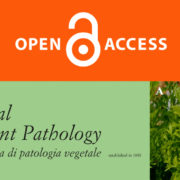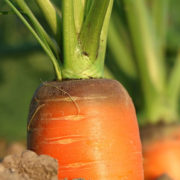‘Candidatus Liberibacter solanacearum’ haplotypes D and E in carrot plants and seeds in Tunisia
Authors
Soukaina Ben Othmen (1), Félix E. Morán (2), Inmaculada Navarro (2), Silvia Barbé (2), Carmen Martínez (2), Ester Marco-Noales (2), Brahim Chermiti (1), María M. López (2)
Affiliations
(1) High Agronomic Institute of Chott-Mariem,University of Sousse Chott-Mariem, Tunisia. (2) Instituto Valenciano de Investigaciones Agrarias (IVIA), Moncada, Spain
Abstract
Vegetative disorders similar to those associated with the presence of ‘Candidatus Liberibacter solanacearum’ (CaLsol) were observed in carrot plants in Kairouan, Tunisia from 2014 to 2016. Symptoms including leaf curling, yellowing, bronze and purplish discoloration, stunting of plants and roots, and proliferation of secondary roots, affected 20 to 40% of the carrots in some plots. In order to determine if these symptoms were associated with the presence of CaLsol, and/or ‘Ca. Phytoplasma spp.’ and/or Spiroplasma citri, real-time PCR analyses were conducted using specific primers for these pathogens. CaLsol was detected for the first time in Tunisia and for the first time its haplotypes D and E were detected co-infecting a carrot plant. Furthermore, three samples of carrot seed produced in Kairouan tested positive for the haplotype D, showing a high percentage (35 to 63%) of viable bacterial cells after treatment with propidium monoazide. However, all the tests were negative for ‘Ca. Phytoplasma’ spp. as well as for S. citri. The results highlight that several CaLsol haplotypes are emerging carrot pathogens in new areas.
This work was supported by an IVIA grant (project 51407) and by the European Union’s Horizon 2020 research and innovation programme (grant agreement No. 635646) project POnTE (Pests
Organisms Threathening Europe).
Published on April 30, 2018 by JOURNAL OF PLANT PATHOLOGY









